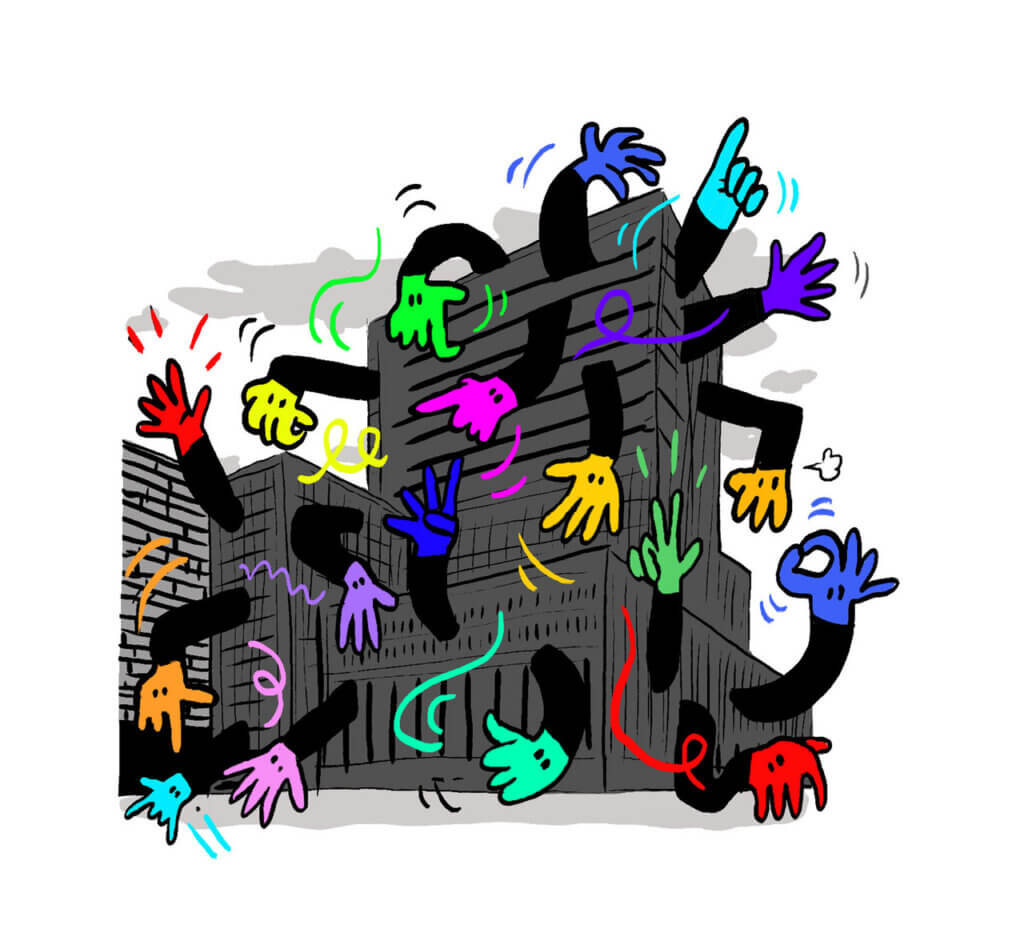What might an arts university look like in 2035? What is futures thinking? The ZHdK Digital Council provides insights into its 2022 thematic focus, with which it is already working on the visions of tomorrow.

SYLVIA BATTEGAY
___
The year is 2035 and ZHdK has expanded its campus to Zurich’s urban and natural environment: workshops are going ahead in local forests, acting classes by the lake. Lecturers and students choose the learning environment best suited to their content. Study spaces are worlds in which diverse forms of phygital (i.e. physical and digital) studying complement each other. Creative enhancement supports both life and learning. New forms of teaching, learning and working are emerging from collaboration and create a reality with many perspectives. These are but some of the scenarios which have been developed in the Digital Council’s workshops “Future Reflection” and “ViVisions.” Building on this work from the last two years, the Digital Council chose “ZHdK+Futures Thinking” as its thematic focus for 2022.
Exploring the future
“When contemplating the future, we travel to a future point in time and, once there, look. We deliberately ignore any feasibility issues which inform or cloud today’s perspective and try to see things differently,” explains Renato Soldenhoff, co-chair of the Digital Council. Together with internal experts and students, as well as with the agencies Knoweaux and Seinheit, members of the Digital Council have held events that make futures thinking tangible and initiate exchange. Scenarios were outlined in various ways, for example, as a story, with a play or a mock-up, to evoke mental images in participants and thereby foster discussion. “The developed scenarios are partly fantastic and yet closer to current developments than we first realized. As a result, they invite debate,” Soldenhoff explains. Whether we like these scenarios or not is less relevant, he says. It is more about thinking about the future in the context of social and artistic developments. Wanja Kröger, a member of the Digital Council and head of the Learning and Teaching Affairs Office, emphasizes: “Thinking about the future is a competence that we need in order to facilitate strategic developments in higher education.”
But are these future scenarios actually feasible? “Personally, I have learned that methods such as ‘future modeling’ help us to break away from spontaneous defence mechanisms against the radically new and to engage in describing desirable futures, without having to consider the challenges of implementing them,” says Susanne Schumacher, co-chair of the Digital Council. “In other words, thinking about the future should not be confused with strategy work in the conventional sense. Rather, it’s about opening up new perspectives, which might be pursued strategically.”
Understanding futures thinking as a competence
Futures thinking is practised at ZHdK in various areas, such as the School of Commons, the Zurich Center for Creative Economies and, of course, in degree programmes such as Trends & Identity at the Department of Design. What is exciting about the methods of futures thinking is how they sharpen our perspective on the present, says Irene Ragaller, research associate at the Digital Council: “Looking into the future allows us to assess the present completely differently.” It is precisely by formulating desirable futures and by developing concrete approaches to solutions that ZHdK can rely on the core competencies of its members. While futures thinking is not an artistic discipline, its methods can benefit from the ways and means of the arts. “Especially in the arts, we are used to kindling the imagination, to telling stories, to creating new worlds and to proposing visionary solutions,” says Schumacher. Curiosity and a love of experimentation are widespread at ZHdK and provide a good starting point for thinking about and into the future.